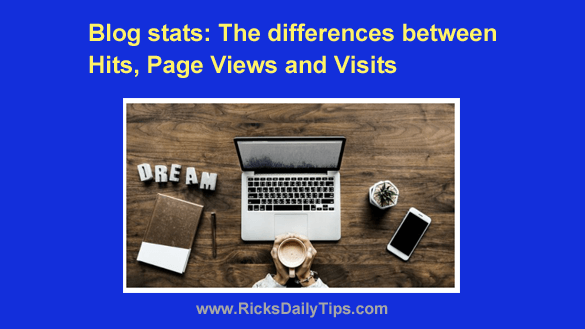
Many new bloggers take a look at their blog’s traffic stats and become confused while viewing the stats for “Hits”, “Page Views” and “Visits”.
Even worse, they often become more confused when they see other bloggers/webmasters bragging about how many “hits” their sites receive every month.
If you find all of this traffic terminology confusing as well, I’ll try to clear it all up for you with this post.
First, lets talk about “Hits”…
In a nutshell, a website receives a hit every time a single file that makes up part of a web page is accessed.
For example, if a web page consists of nothing but static HTML code and nothing else, every time a visitor’s web browser visits that page it will result in a total of one hit (for the web page itself).
But if the webmaster were to add five photos to that same page, all new views of that page in a browser would result in a total of six hits (one for the HTML page itself and one each for the five photos).
Many modern websites and blogs have dozens of photos and other graphics per page, plus other files that add functionality and structure to the page. Viewing such a page in a browser just one time could easily result in several dozen hits.
Next, lets discuss “Page Views”…
A page view is just that. Every time a web page is displayed in a visitor’s browser, one new page view is recorded in the website’s stats regardless of how many photos or other files the page might contain.
As you can see, a single page view can result in dozens of hits. That’s why some webmasters prefer to sell advertising based upon how many hits their site receives each month instead of the number of page views.
Basing advertising rates on hits instead of page views is very misleading because a banner ad on a page that contains 10 photos would only be displayed in a visitor’s web browser once for each page view, even though that same page view would result in a total of a dozen hits (one for the page itself, one for the banner graphic and 10 for the photos).
And finally, there are “Visits”…
A visit is recorded every time a person accesses at least one page on a website within a given length of time (aka a session). It doesn’t matter whether the “visitor” looks at one page, ten pages or a hundred pages during a session, a single visit is recorded in the stats.
Bottom line: The number of “hits” a website receives is a very poor indicator of how popular the site is.
A low-traffic site with pages that contain lots of photos and other files can easily receive more hits in a given length of time than a more popular site that’s filled with pages that make use of just a few files.
If you ever find yourself looking to buy advertising for your blog/website, ignore the number of hits the sites you are considering advertising on receive and make your decision based upon the number of page views they receive.
Bonus tip: Does you blog take too long to load? Find out right now with this free tool.